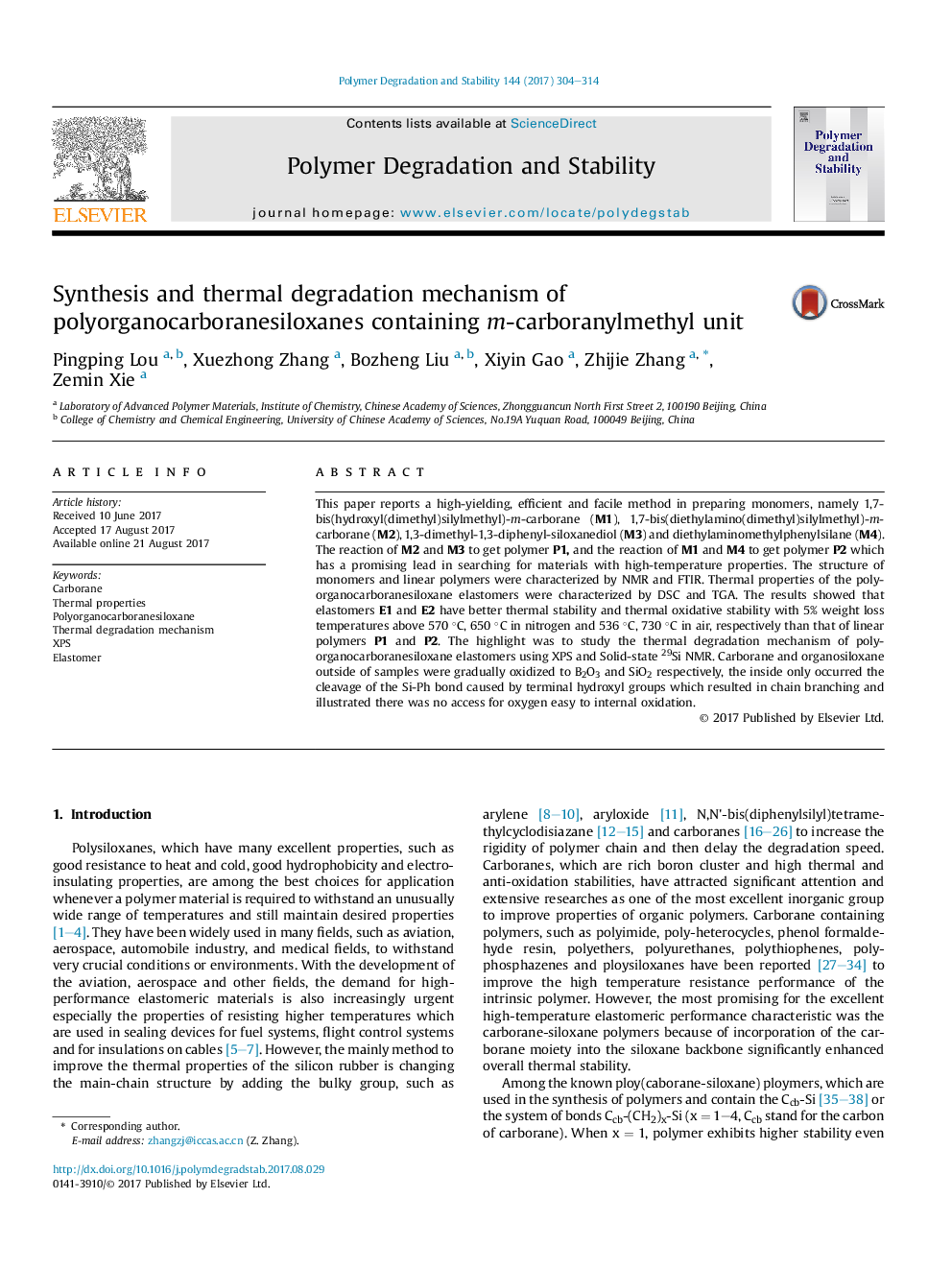| کد مقاله | کد نشریه | سال انتشار | مقاله انگلیسی | نسخه تمام متن |
|---|---|---|---|---|
| 5200756 | 1502869 | 2017 | 11 صفحه PDF | دانلود رایگان |
عنوان انگلیسی مقاله ISI
Synthesis and thermal degradation mechanism of polyorganocarboranesiloxanes containing m-carboranylmethyl unit
ترجمه فارسی عنوان
سنتز و مکانیزم تخریب حرارتی پلی مگناروآربرونیلوکسان ها حاوی واحد ماتریکس کربورانیل متیل
دانلود مقاله + سفارش ترجمه
دانلود مقاله ISI انگلیسی
رایگان برای ایرانیان
کلمات کلیدی
موضوعات مرتبط
مهندسی و علوم پایه
شیمی
شیمی آلی
چکیده انگلیسی
This paper reports a high-yielding, efficient and facile method in preparing monomers, namely 1,7-bis(hydroxyl(dimethyl)silylmethyl)-m-carborane (M1), 1,7-bis(diethylamino(dimethyl)silylmethyl)-m-carborane (M2), 1,3-dimethyl-1,3-diphenyl-siloxanediol (M3) and diethylaminomethylphenylsilane (M4). The reaction of M2 and M3 to get polymer P1, and the reaction of M1 and M4 to get polymer P2 which has a promising lead in searching for materials with high-temperature properties. The structure of monomers and linear polymers were characterized by NMR and FTIR. Thermal properties of the polyorganocarboranesiloxane elastomers were characterized by DSC and TGA. The results showed that elastomers E1 and E2 have better thermal stability and thermal oxidative stability with 5% weight loss temperatures above 570 °C, 650 °C in nitrogen and 536 °C, 730 °C in air, respectively than that of linear polymers P1 and P2. The highlight was to study the thermal degradation mechanism of polyorganocarboranesiloxane elastomers using XPS and Solid-state 29Si NMR. Carborane and organosiloxane outside of samples were gradually oxidized to B2O3 and SiO2 respectively, the inside only occurred the cleavage of the Si-Ph bond caused by terminal hydroxyl groups which resulted in chain branching and illustrated there was no access for oxygen easy to internal oxidation.
ناشر
Database: Elsevier - ScienceDirect (ساینس دایرکت)
Journal: Polymer Degradation and Stability - Volume 144, October 2017, Pages 304-314
Journal: Polymer Degradation and Stability - Volume 144, October 2017, Pages 304-314
نویسندگان
Pingping Lou, Xuezhong Zhang, Bozheng Liu, Xiyin Gao, Zhijie Zhang, Zemin Xie,
